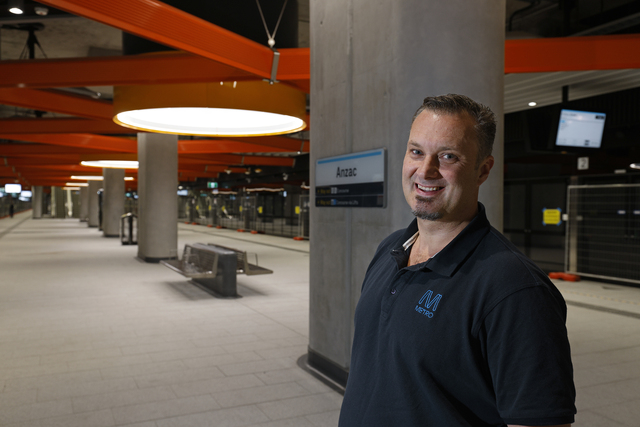A KOALA hit by a car in Cranbourne East last week has highlighted the problems of nature versus urban growth.
Last Thursday morning, the Australian Wildlife Assistance Rescue and Education (AWARE) was called to the South Gippsland Highway near Cameron Street after a koala was injured by traffic.
A crew from AWARE attended but the koala retreated up an old gum tree and the CFA had to be called. Dandenong Fire Brigade’s hydraulic platform helped the crew reach into the tree.
Although the koala was reluctant to leave its position, it was eventually removed and caged by the combined efforts of the rescue teams on scene.
Michelle Thomas from AWARE said the koala was doing well and was set for release back into the wild in the next few days. It was treated for a broken claw but Ms Thomas said koalas could cope with one broken claw.
“It had no other injuries. It is even better now than when it came in,” she said.
But Ms Thomas said incidents of cars hitting native animals in Cranbourne were becoming common.
“There are so many koalas and kangaroos in this area and new (housing) estates are being built up all the time.”
RACV Insurance figures show cars hitting kangaroos in Victoria has increased by 26 per cent in the past year.
Animal-related collision claims accounted for 3 per cent of all RACV claims in Victoria in 2006 and 7 per cent of all highway claims.
The increase is mostly attributed to the drought, with animals continuing to breed throughout the season, and urban sprawl.
RACV Insurance general manager Susan Allen said during the September holidays, motorists needed to be conscious of animals on the roads, particularly at dawn and dusk when they were most active.
Motorists who hit animals or find them injured should contact RACV’s 24-hour Wildlife Connect referral service on 131 111.
Wildlife’s suffering on the roads rises
Digital Editions
-

Pakenham driver set for tunnel opening
The Metro Tunnel is set to open in less than two weeks and Pakenham’s Mark Godden is set to be among the first drivers to…





